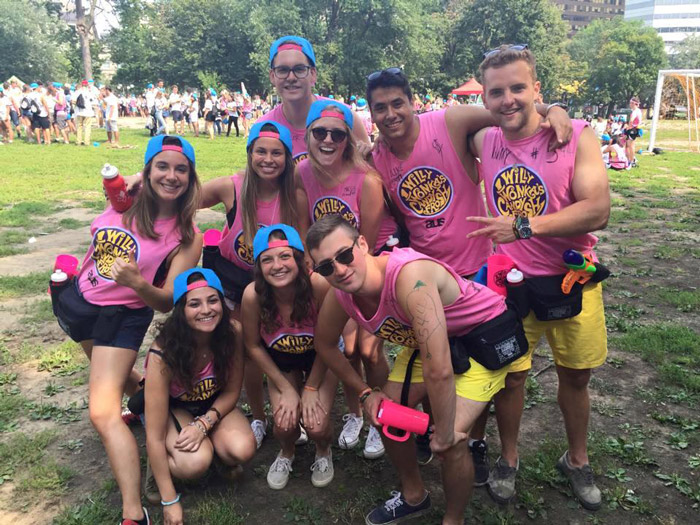The Arts Undergraduate Society (AUS) announced at their latest council meeting that they are projecting an approximate surplus of $6,000 from this year’s Arts Frosh. This comes as a distinct contrast to last year’s $30,000 deficit.
AUS Vice-President (VP) Finance Mizra Ali Shakir and VP Social Christine Koppenaal were responsible for preparing the Frosh budget. According to Shakir, AUS intends to use the profits to fund events and programs for first-year Arts students.
“One of the main reasons for the surplus this year was a revamped Frosh budgeting process that was more thorough and more integrated than past years,” Shakir said. “The VP Social and I prepared a comprehensive budget for Frosh and updated it at least twice a week. Additionally, we ran Frosh very systematically this year in the sense that we spent what we got from ticket sales. Frosh sold out and we ended up selling more tickets than what we had projected.”
Arts Frosh brought in nearly $218,000 in revenue, $177,000 of which came from ticket sales. The remaining revenue came from fees paid by Frosh leaders and orientation staff, as well as $20,000 in sponsorships.
“We placed a lot of emphasis on sponsorship to mitigate our costs,” Shakir said.
The single largest Arts Frosh expense was a concert at New City Gas, which cost upwards of $46,000. Other major expenses included the two boat cruises, which together will amount to nearly $38,000, and the Montreal Alouettes game, which cost $18,000 at a price of $11 per ticket. To account for the cost of these events, ticket prices were raised, and overall expenses per day were lowered.
“[Frosh] ticket prices were raised to $145 from $125 last year to account for the extra day,” Shakir said.“Revenues per day this year amount to $43,600 compared to $38,500 last year, while costs per day this year are $42,400 versus $46,000 last year.”
AUS bylaws state that if there is a surplus in the Frosh budget, the money will be allocated to events planned for first-year students by the VP Social in collaboration with the First-Year Events, Academic, and Representative Council (FEARC).
“This article was included in the Frosh bylaws because as an event planned primarily by first-year students and funded mainly by tickets sold to first-year students, the surplus should be returned to first-year students through events later in the year planned specifically for them,” Shakir said.
While Frosh events prior to 2014 have returned significantly greater profits than this year’s $6,000, Shakir explained that the nature of the AUS makes a smaller profit more ideal.
“As a non-profit corporation, the AUS is mandated to break even and that we aim to keep ticket prices—our main Frosh revenue source—as low as possible,” Shakir said. “A profit of five to 6,000 dollars is better […] because we are much closer to breaking even.”
U3 Arts Frosh leader Rhiannon Turgel spoke to the management of this year’s Frosh.
“This year was my third Frosh and I felt as though it was better organized than past years,” she said. “I felt like the coordinators realized [what] had gone wrong in previous years and made it better.”
The Science Undergraduate Society (SUS) also ran a surplus for Frosh, explained SUS President Jeremy Goh.
“Our surplus was around $18,000, and previous years also ran surpluses, as SUS usually doesn’t run deficits for Frosh.” Goh said. “The money will be used to complete logistical audits, [and] new initiatives like […] the career fair, and give more money to our current events.”









